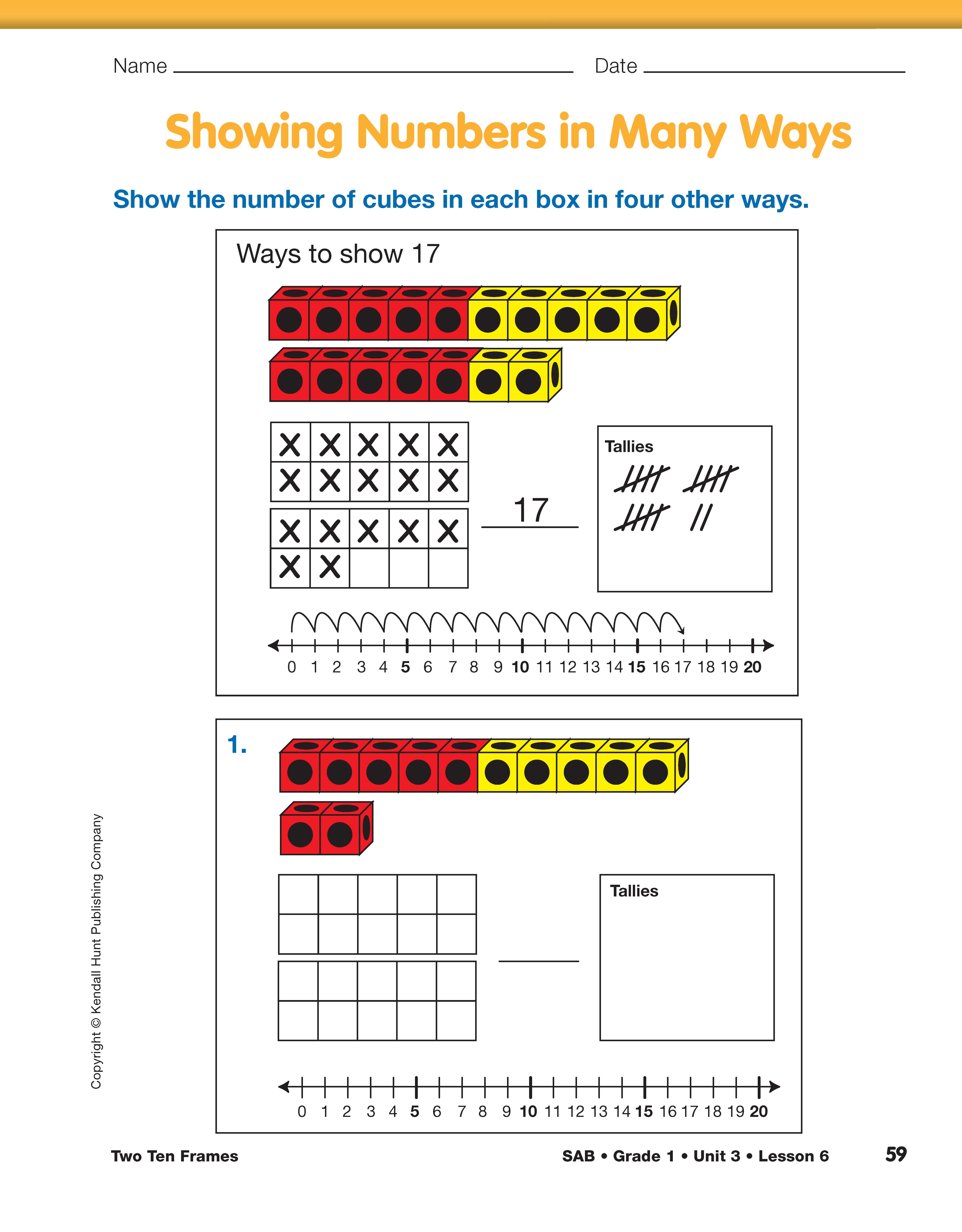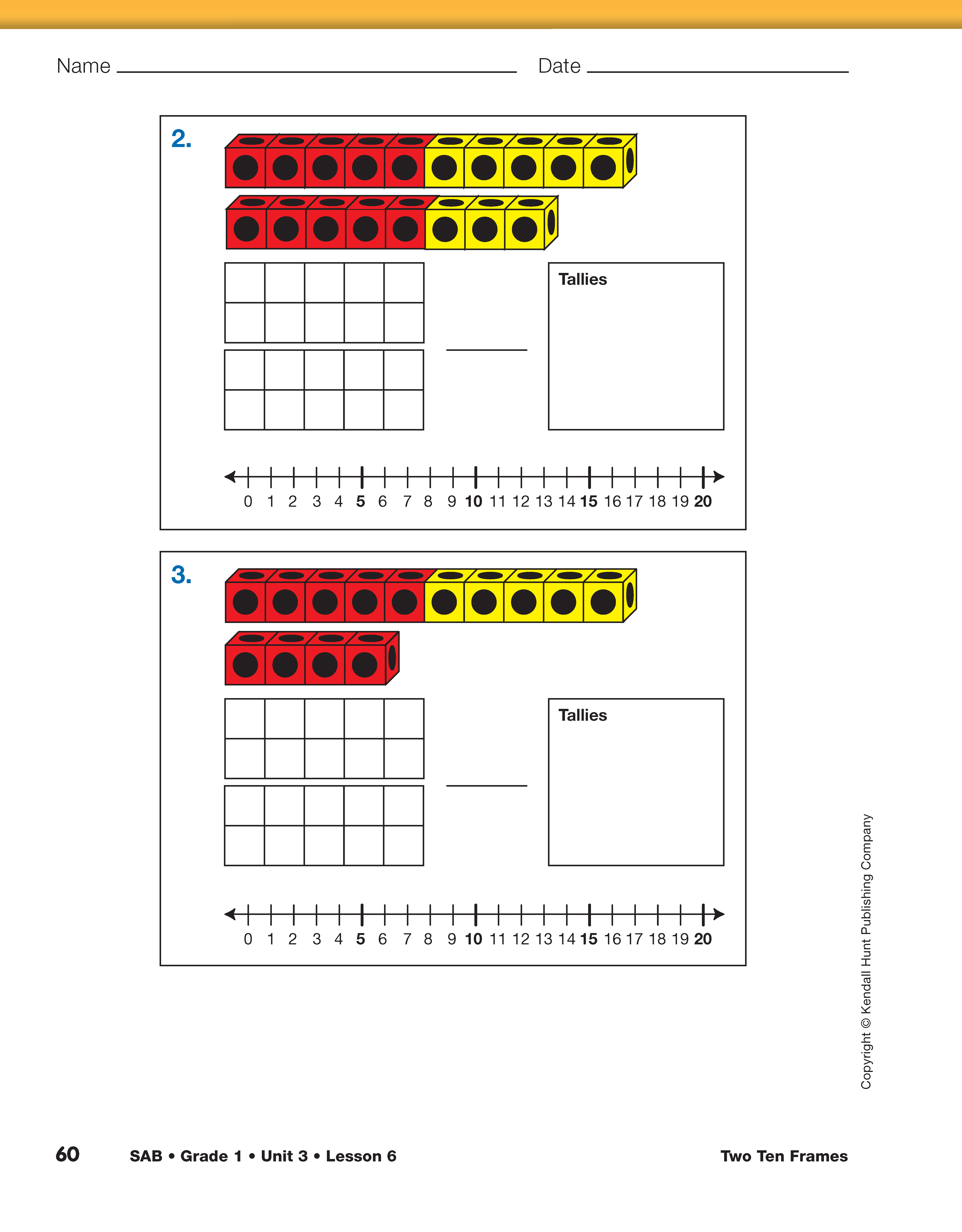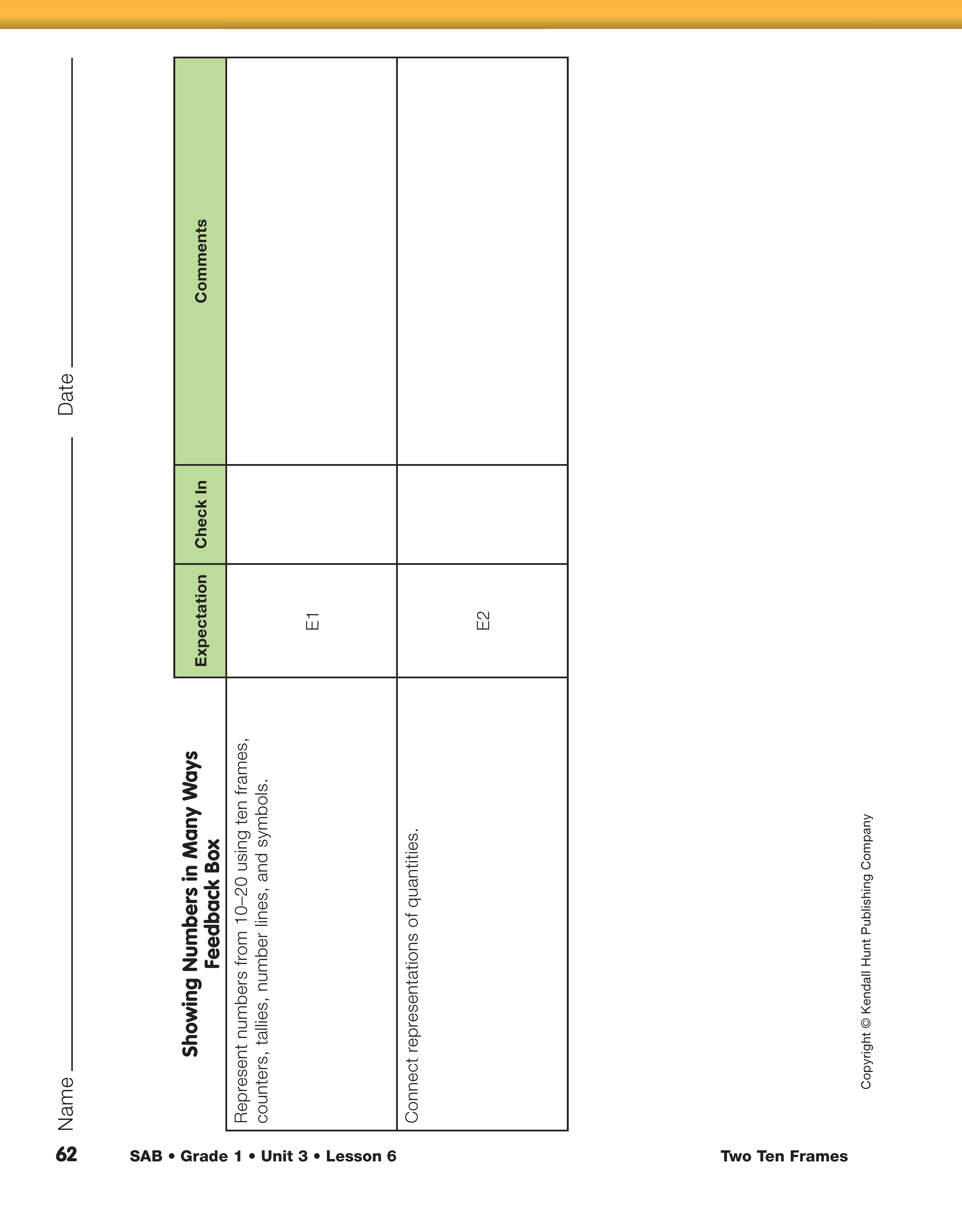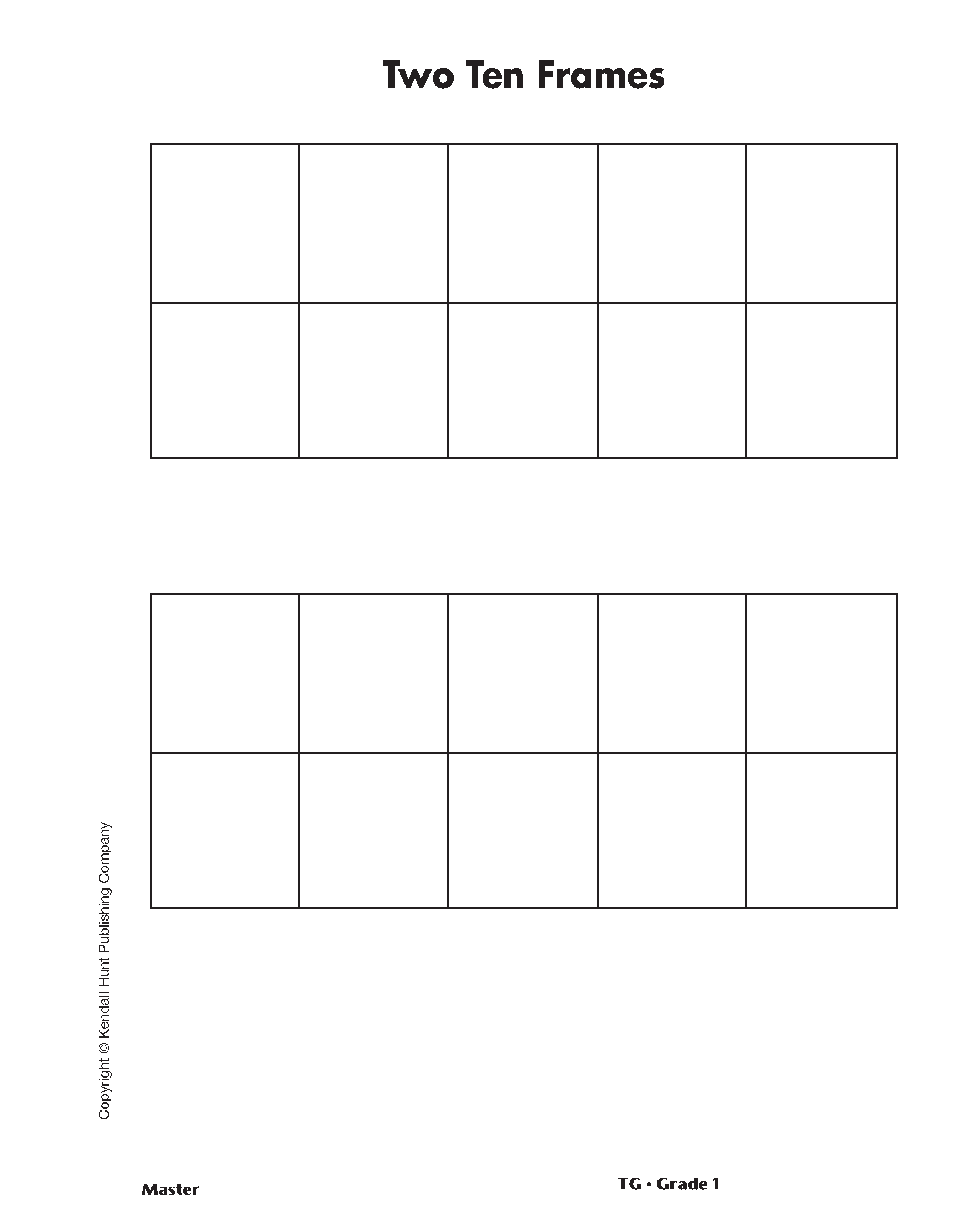Two Ten Frames
Est. Class Sessions: 2Developing the Lesson
Show 0–10 with Trains and Ten Frames.
Distribute copies of the Two Ten Frames Master and
20 connecting cubes (ten of one color and ten of
another color) to each student. Briefly review how to
represent numbers from zero to ten on a ten frame
and with trains of connecting cubes. Choose a number
between 0 and 10. Ask half the class to make a train
of connecting cubes to show that number. Ask the
other half of the class to place their connecting cubes
on the ten frame to show the number. Use a display
of the Two Ten Frames Master to focus students and
remind them to fill in the ten frames from left to
right and top to bottom. Repeat this routine for a few
numbers to review both representations having students
take turns with each representation.
Show 11–20 on Ten Frames. Ask students to focus on your display of the Two Ten Frames Master and show 12 on the ten frames.
Ask:
Show 15 on the ten frames.
Ask:
Show 20 on the ten frames and ask students to name the number.
Ask:
Ask students to work with a partner to represent other numbers from 0 to 20 with ten frames. Tell students to take turns choosing numbers to represent by placing connecting cubes on the ten frame. Use questions similar to the previous discussion, encouraging students to use the benchmarks of 5, 10, 15, and 20 to identify the number represented.
Represent 11–20 with Connecting Cubes. When students are comfortable representing numbers between 11 and 20 on the ten frame, ask them to build a train of ten cubes using two colors. Display a number between 11 and 20 on a display of the Two Ten Frames Master and ask students to use their connecting cubes to make the number larger than 10 that you have displayed.
Ask:
Emphasize the relationship of the number to 10, 15, and 20. Ask students to explain how they know they have the correct number of cubes in their trains. Encourage students to count the cubes in their trains by counting on from ten or 15 or by skip counting by five. Repeat this discussion for several other numbers.
Have students work on the Showing Numbers in Many Ways pages in the Student Activity Book.



















